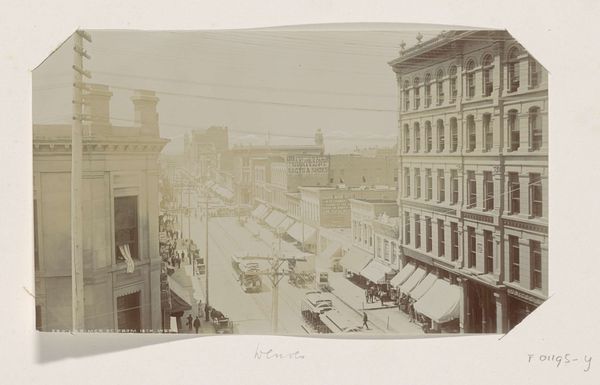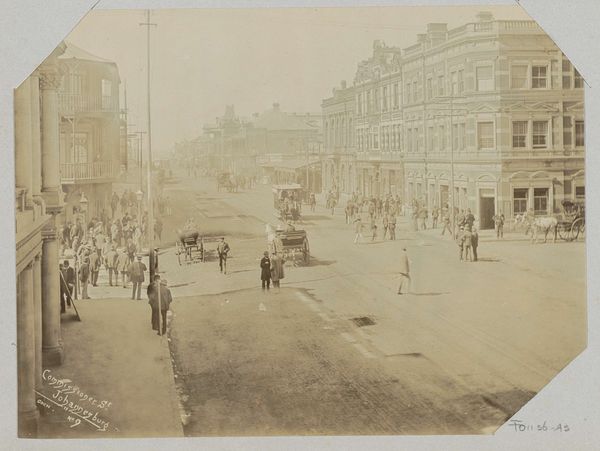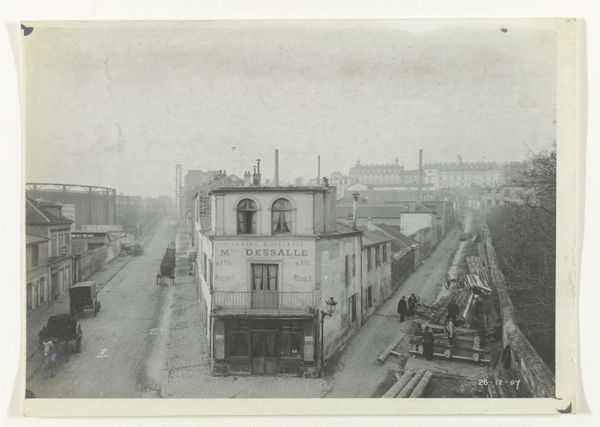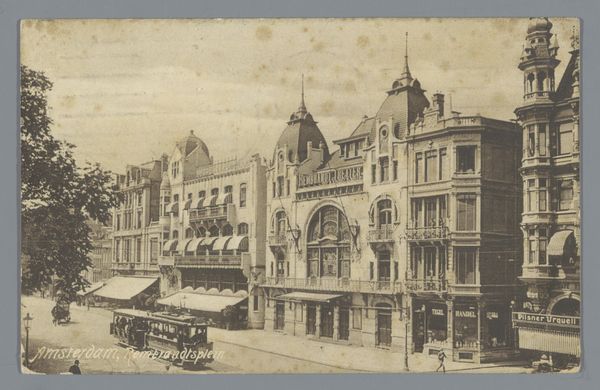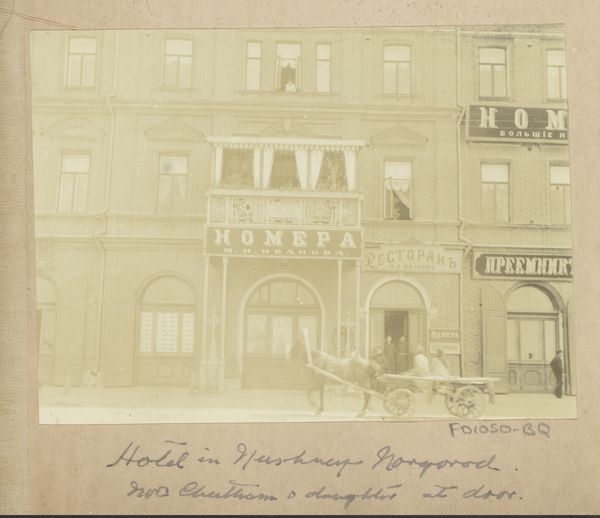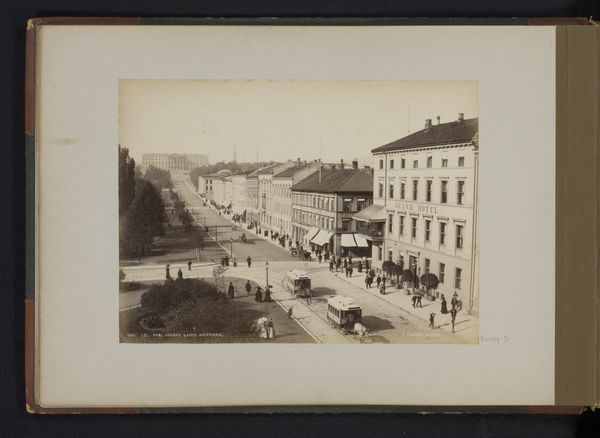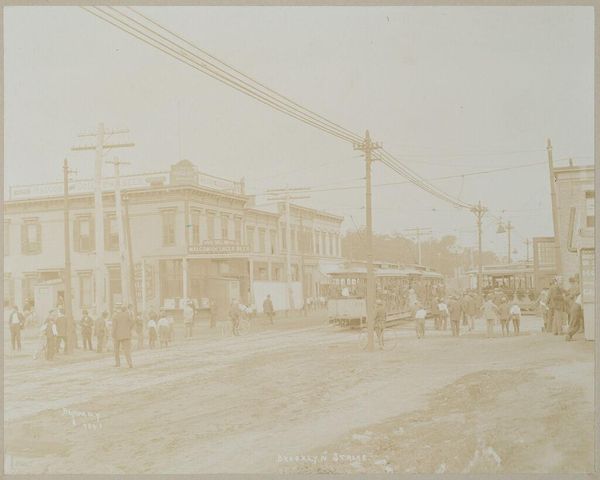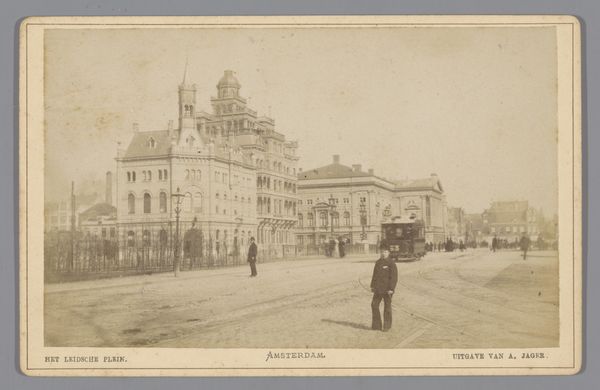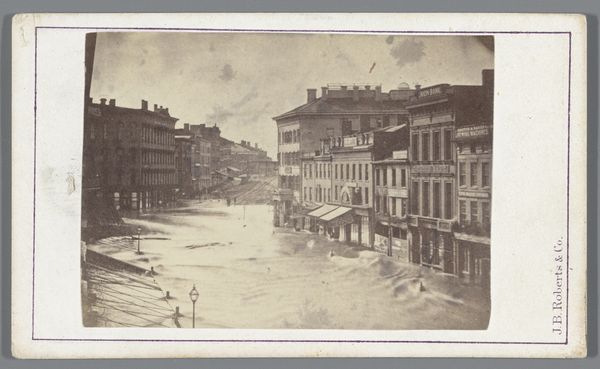
photography
#
photography
#
russian-avant-garde
#
cityscape
#
realism
Dimensions: height 85 mm, width 113 mm
Copyright: Rijks Museum: Open Domain
Curator: Immediately, a feeling of quietude strikes me in viewing this vintage photograph. It is bathed in sepia, casting a sort of nostalgic veil. Editor: This is indeed a sepia-toned photograph, created sometime between 1903 and 1904. Entitled "Street with shops in Nizhny Novgorod," it provides us a glimpse into the urban landscape of early 20th-century Russia, and comes to us from the collection at the Rijksmuseum. Curator: There's a compelling interplay of linear forms—the rigid architecture offset by the organic shapes of people going about their business. I wonder about the conscious organization of the visual space here. Did the photographer understand semiotics in his framing? Editor: Likely the photographer, unknown as they are, was attempting to capture daily life, but let’s delve into that very subject you raise. The buildings serve as a structured backdrop against which the daily drama unfolds. Signs in Russian script, rendered largely illegible, denote the shops' purposes. Curator: Those blurry figures further disrupt any stark geometries—blurring lines and creating softer edges throughout the image. Their postures and spacing seems carefully noted... or perhaps it’s my interpretation of realism edging into fantasy. Editor: Considering the photograph’s historical position, the city of Nizhny Novgorod occupied an interesting space, literally and figuratively, within the vast Russian Empire. The early 1900's also marked a period of significant social and political unrest. Curator: How does the subdued color palette, and frankly the light itself, impact our reading of this city then? It certainly adds another layer of nuance, moving beyond simplistic representations of reality to something moodier. Editor: Well, it certainly does seem to lack the glamour of the great capitals such as Moscow or St. Petersburg. But, it also encapsulates that burgeoning period of artistic experimentation—a moment where social realism started intermingling with other Avant-Garde influences. Curator: Indeed! By capturing what one assumes is just a typical day, a moment in time is effectively frozen, letting the photograph resonate in the current time as much as its own past. The lack of crisp lines makes its textures—the rough road, ornate roof lines, people dressed formally—much more tactile. Editor: I’d say, by focusing on these elements, this photograph underscores how everyday images act as valuable documents reflecting profound shifts in society’s very structures.
Comments
No comments
Be the first to comment and join the conversation on the ultimate creative platform.
